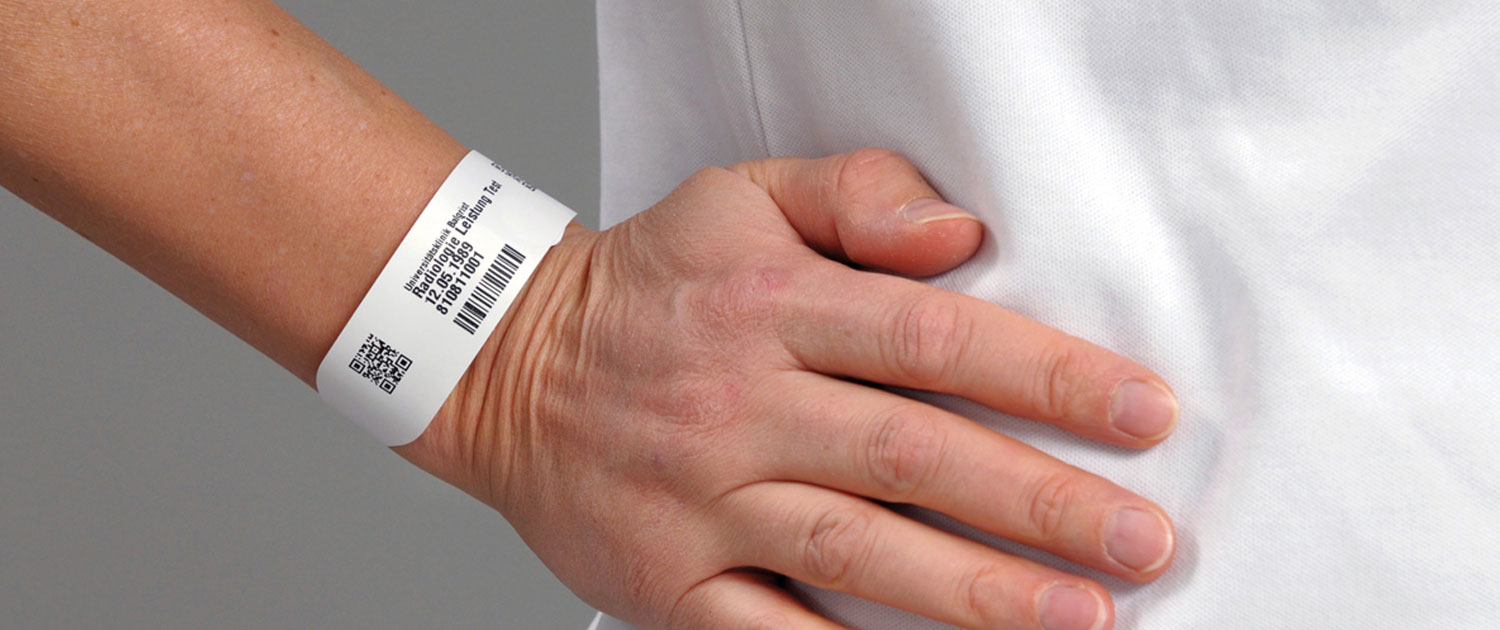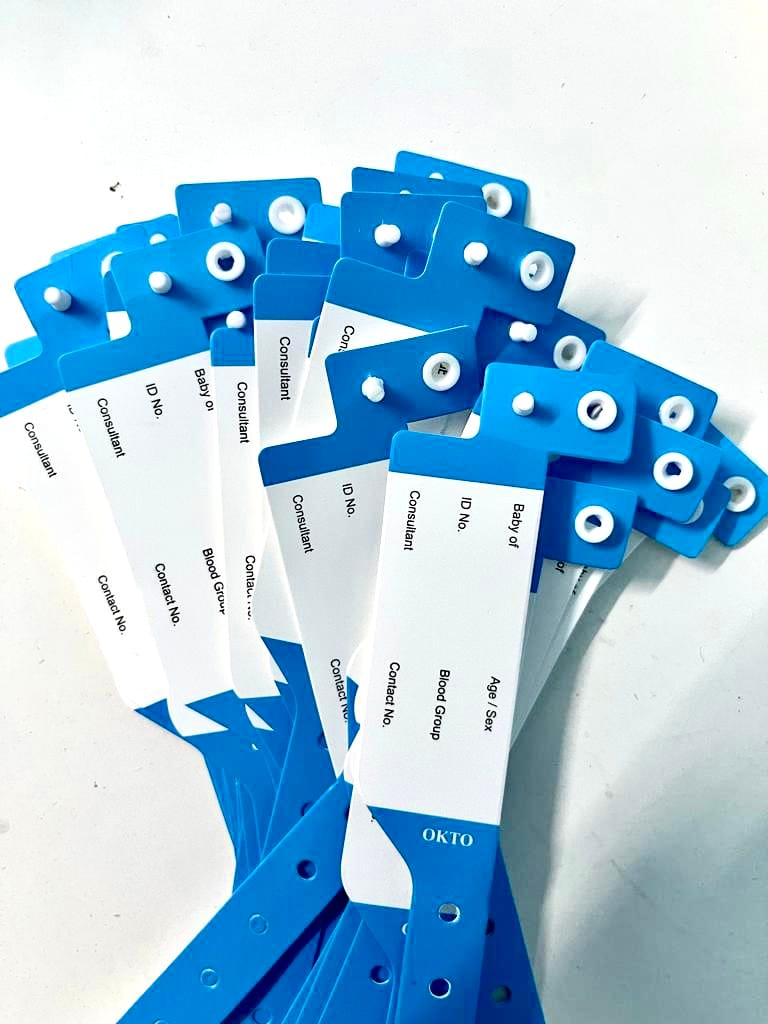Just How Patient Identification Band Improves the Overall Patient Experience in Medical Facilities
Just How Patient Identification Band Improves the Overall Patient Experience in Medical Facilities
Blog Article
Enhancing Person Care With Efficient Identification Bands
The execution of reliable identification bands is a crucial element in enhancing patient treatment within healthcare settings. These bands not just serve to alleviate the dangers related to patient misidentification however likewise streamline interaction among clinical personnel, therefore fostering a safer atmosphere. Numerous sorts of identification bands deal with particular demands, from durable wristbands for adults to specialized bands for infants and important cases. As the landscape of client recognition develops, one have to take into consideration the effects of these systems on general health care shipment and person outcomes. What advancements wait for in this critical area?
Relevance of Client Identification
Making sure precise client recognition is crucial in health care settings, as it directly affects the security and quality of treatment supplied. Misidentification can result in severe errors, consisting of providing the incorrect medicine, executing wrong procedures, or miscommunicating essential client details. Such errors not only endanger individual safety but can additionally lead to lawful ramifications and decreased rely on healthcare systems.
Reliable person identification is essential to developing a safe and secure environment where clients get ideal and tailored care. It promotes the accurate documents of case histories, allergies, and therapy plans, making certain that doctor have access to essential info at all times. Robust recognition protocols help simplify communication amongst clinical team, enhancing collaboration and reducing the threat of errors.

Kinds of Recognition Bands
Recognition bands play a vital duty in preserving exact individual documents and improving safety and security within healthcare atmospheres. Various sorts of recognition bands are utilized to accommodate the specific requirements and requirements of various individual populations.

Another kind is the ankle joint band, which is particularly helpful for infants and newborns, ensuring that identification continues to be intact even during treatment treatments. Specialized bands, such as those for allergic reaction notifies or fall danger indicators, supply additional layers of safety by drawing prompt focus to critical patient conditions.
Lately, digital recognition bands have gained popularity, incorporating barcodes or RFID innovation that can be checked to rapidly retrieve person information. These bands enhance process and reduce the risk of human error during person recognition procedures.
Advantages of Reliable Identification
Effective identification of clients with making use of recognition bands contributes significantly to overall individual safety and care quality. By guaranteeing that each individual is properly determined, medical care carriers can effectively match medical therapies and procedures to the proper individual, minimizing the threat of mistakes. This is specifically crucial in environments with high individual turn over, where the potential for misidentification is higher.
Additionally, efficient identification bands enhance communication amongst medical care teams. Exact and clear client identification cultivates partnership and ensures that all employee understand a client's details needs and medical history. This communication is vital for supplying collaborated treatment, specifically in emergency scenarios where time is important.

Eventually, effective identification with making use of identification bands not only safeguards individuals yet additionally advertises a culture of security within medical care centers (Patient Identification Band). By prioritizing precise identification, medical care organizations can boost outcomes and enhance the total person experience
Implementing Identification Systems
While the relevance of client recognition is well acknowledged, the application of durable identification systems positions a complicated difficulty for health care companies. Developing reliable recognition systems calls for a detailed technique, incorporating innovation, personnel training, and process integration.
First, organizations have to select appropriate identification technologies, such as barcode scanning, RFID, or biometric systems. Patient Identification best site Band. These innovations must be evaluated based on price, use, and compatibility with existing framework. A pilot program can help recognize potential problems prior to major implementation
Following, thorough training for staff is important. All employees must recognize the importance of accurate client identification and excel in using the selected technologies. Routine training updates and assessments can strengthen finest techniques and make sure continued compliance.
Additionally, healthcare organizations should establish standard treatments for patient identification across all departments, decreasing inconsistencies and enhancing communication. Routine audits can assist determine spaces in adherence to these protocols.

Eventually, an efficient application of identification systems not only improves individual security however also fosters a culture of responsibility and diligence within medical care settings, making certain constant and reputable individual care.
Future Trends in Person Recognition
Developments in technology are set to reinvent individual identification practices in healthcare settings. The assimilation of biometric identification methods, such as fingerprinting and face recognition, is anticipated to boost accuracy and safety. These innovations can significantly reduce the threat of misidentification, making sure that individuals receive the proper treatments and medicines.
Additionally, the application of blockchain technology for client records is getting grip. This decentralized technique can give a tamper-proof and safe method for managing patient identifications, thus improving accessibility to essential details throughout various doctor.
An additional trend is the raising use of mobile health applications that take advantage of QR codes for person identification. These applications enable real-time updates and easy accessibility to client information, encouraging health care experts to make enlightened choices promptly.
In addition, artificial intelligence (AI) is poised to play an essential role in analyzing patient identification data, recognizing patterns, and predicting possible identification mistakes before they occur.
As these technologies evolve, they promise not only to boost patient safety and security but additionally to improve the overall effectiveness of health care distribution systems. Embracing these innovations will blog certainly be crucial for future-proofing client care methods.
Final Thought
Finally, reliable recognition bands are essential for enhancing individual security and care quality within healthcare setups. By minimizing the dangers associated with misidentification, these bands promote prompt and accurate information access, inevitably enhancing interaction among healthcare carriers. The execution of durable identification systems not just cultivates a society of safety and security yet also positions healthcare institutions to adjust her comment is here to future fads in person identification innovation, making sure ideal results for individuals in varied professional environments.
As the landscape of individual recognition evolves, one should take into consideration the implications of these systems on overall healthcare distribution and person outcomes.Reliable client identification is fundamental to establishing a protected environment where patients receive ideal and personalized treatment. Inevitably, prioritizing reliable patient identification techniques not just cultivates a culture of safety and security however additionally contributes to boosted person results and total complete satisfaction with medical care solutions.
Effective identification of individuals with the use of identification bands adds considerably to general person security and care high quality. The execution of robust recognition systems not only promotes a society of safety yet also placements medical care institutions to adapt to future trends in client recognition technology, guaranteeing optimal end results for clients in diverse clinical environments.
Report this page